| Years in Russia: | 1738 1739 1740 1741 1742 1743 1744 |
| Centuries: | 17th century · 18th century · 19th century |
| Decades: | 1710s 1720s 1730s 1740s 1750s 1760s 1770s |
| Years: | 1738 1739 1740 1741 1742 1743 1744 |

Events from the year 1741 in Russia
| Years in Russia: | 1738 1739 1740 1741 1742 1743 1744 |
| Centuries: | 17th century · 18th century · 19th century |
| Decades: | 1710s 1720s 1730s 1740s 1750s 1760s 1770s |
| Years: | 1738 1739 1740 1741 1742 1743 1744 |

Events from the year 1741 in Russia
| | This section needs expansion. You can help by adding to it. (October 2015) |
| | This section needs expansion. You can help by adding to it. (October 2015) |
| | This section needs expansion. You can help by adding to it. (October 2015) |
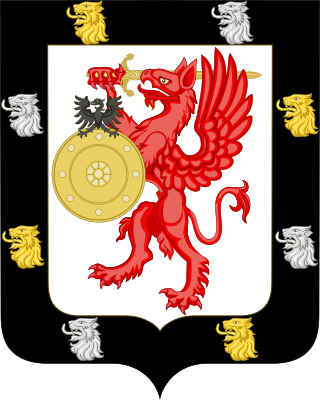
The House of Romanov was the reigning imperial house of Russia from 1613 to 1917. They achieved prominence after Anastasia Romanovna married Ivan the Terrible, the first crowned tsar of all Russia. Nicholas II and his immediate family were executed in 1918, but there are still living descendants.

Elizabeth or Elizaveta Petrovna reigned as Empress of Russia from 1741 until her death in 1762. She remains one of the most popular Russian monarchs because of her decision not to execute a single person during her reign, her numerous construction projects, and her strong opposition to Prussian policies.

Ivan IV Vasilyevich, commonly known as Ivan the Terrible, was Grand Prince of Moscow and all Russia from 1533, and Tsar of all Russia from 1547 until his death in 1584. He was the first Russian monarch to be crowned as tsar.
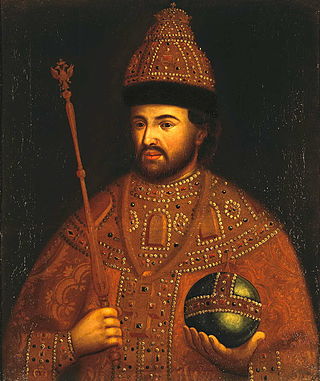
Ivan V Alekseyevich was Tsar of all Russia between 1682 and 1696, jointly ruling with his younger half-brother Peter I. Ivan was the youngest son of Alexis I of Russia by his first wife, Maria Miloslavskaya, while Peter was the only son of Alexis by his second wife, Natalya Naryshkina. Ivan's reign was solely titular because he had serious physical and mental issues.

Ivan VI Antonovich, also known as Ioann Antonovich, was an infant emperor of Russia from October 1740 until he was overthrown by his cousin Elizabeth Petrovna in December 1741. He was only two months old when he was proclaimed emperor and his mother, Anna Leopoldovna, named regent, but the throne was seized in the coup after a year. Ivan and his parents were imprisoned far from the capital, and spent the rest of their lives in captivity.

Count Andrey Ivanovich Osterman was a German-born Russian statesman who came to prominence under Tsar Peter I of Russia and served until the accession of the Tsesarevna Elizabeth in 1741. He based his foreign policy on the Austrian alliance. General Admiral.

Count Alexey Petrovich Bestuzhev-Ryumin was a Russian diplomat and chancellor. He was one of the most influential and successful diplomats in 18th-century Europe. As the chancellor of the Russian Empire was chiefly responsible for Russian foreign policy during the reign of Empress Elizaveta Petrovna.

Anna Leopoldovna, born Elisabeth Katharina Christine von Mecklenburg-Schwerin and also known as Anna Carlovna, was regent of Russia for just over a year (1740–1741) during the minority of her infant son Emperor Ivan VI.
A queen dowager or dowager queen is a title or status generally held by the widow of a king. In the case of the widow of an emperor, the title of empress dowager is used. Its full meaning is clear from the two words from which it is composed: queen indicates someone who served as queen consort, while dowager indicates a woman who continues to hold the title from her deceased husband. A queen mother is a former queen consort, often a dowager queen, who is the mother of the reigning monarch.

The Order of St. Andrew the Apostle the First-Called is the highest order conferred by both the Russian Imperial Family and by the Russian Federation . Established as the first and highest order of chivalry of the Russian Tsardom and the Russian Empire in 1698, it was removed from the honours system under the USSR before being re-established as the top Russian civil and military order in 1998.
Grand Duke of Finland, alternatively the Grand Prince of Finland, was, from around 1580 to 1809, a title in use by most Swedish monarchs. Between 1809 and 1917, it was the official title of the ruler of the autonomous Grand Duchy of Finland, who was also the Emperor of Russia. The anachronistic female form of the title in English would be Grand Duchess of Finland. The only women to have used the title were the Swedish queens regnant Kristina and Ulrika Eleonora. A few crown princes of Sweden also were called Grand Duke of Finland.

The Livonian War (1558–1583) was fought for control of Old Livonia. The Tsardom of Russia faced a varying coalition of the Dano-Norwegian Realm, the Kingdom of Sweden, and the Union of the Grand Duchy of Lithuania and the Kingdom of Poland.
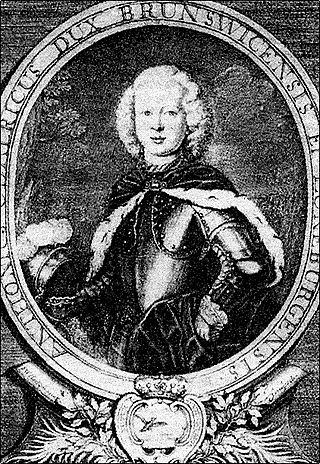
Duke Anthony Ulrich of Brunswick-Lüneburg was a German prince and military officer.
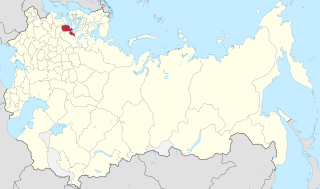
The Saint Petersburg Governorate was a governorate of the Russian Empire, with its administrative centre in Saint Petersburg. The governorate was composed of 44,613 square kilometres (17,225 sq mi) of area and 2,112,033 inhabitants. The Saint Petersburg Governorate was bordered by the Estonian and Livonian Governorates to the west, the Pskov Governorate to the south, the Novgorod Governorate to the east, the Olonets Governorate to the northeast, and the Vyborg Governorate of the Grand Duchy of Finland to the north. The governorate covered most of the areas of modern Leningrad Oblast and Ida-Viru, Jõgeva, Tartu, Põlva, and Võru counties of Estonia.
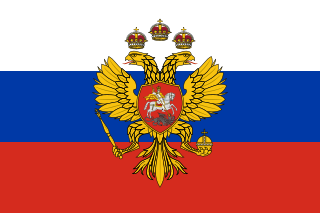
The Tsardom of Russia, also known as the Tsardom of Muscovy, was the centralized Russian state from the assumption of the title of tsar by Ivan IV in 1547 until the foundation of the Russian Empire by Peter the Great in 1721.

Smolny Convent or Smolny Convent of the Resurrection, located on Ploschad Rastrelli, on the left bank of the River Neva in Saint Petersburg, Russia, consists of a cathedral (sobor) and a complex of buildings surrounding it, originally planned as a convent.

Sweden–Ukraine relations are foreign relations between Sweden and Ukraine. Diplomatic relations between the two countries were established on 13 January 1992. Sweden has an embassy in Kyiv and an honorary consulate in Kakhovka. Ukraine has an embassy in Stockholm. Sweden is a member of the European Union, which Ukraine applied for in 2022. Both countries are members of the OSCE, Council of Europe, World Trade Organization and United Nations.
Events from the year 1740 in Russia

Vasily Yakovlevich Mirovich was a Little Russian (Ukrainian) lieutenant in the Imperial Russian Army's 25th Smolensk Infantry Regiment best known for his attempted but ultimately unsuccessful rescue of Ivan VI of Russia at Shlisselburg Fortress during the reign of Catherine the Great. Ivan VI had been Emperor of Russia for more than a year as an infant in 1740–1741, until he and his family were deposed and imprisoned by Elizabeth of Russia. The attempted rescue ended with Ivan VI's murder by his two permanent prison guards, who were under strict and secret orders by the empress to kill their prisoner in such an event.